All Purpose Shop Cart
by Designer_of_ in Workshop > Woodworking
24307 Views, 253 Favorites, 0 Comments
All Purpose Shop Cart
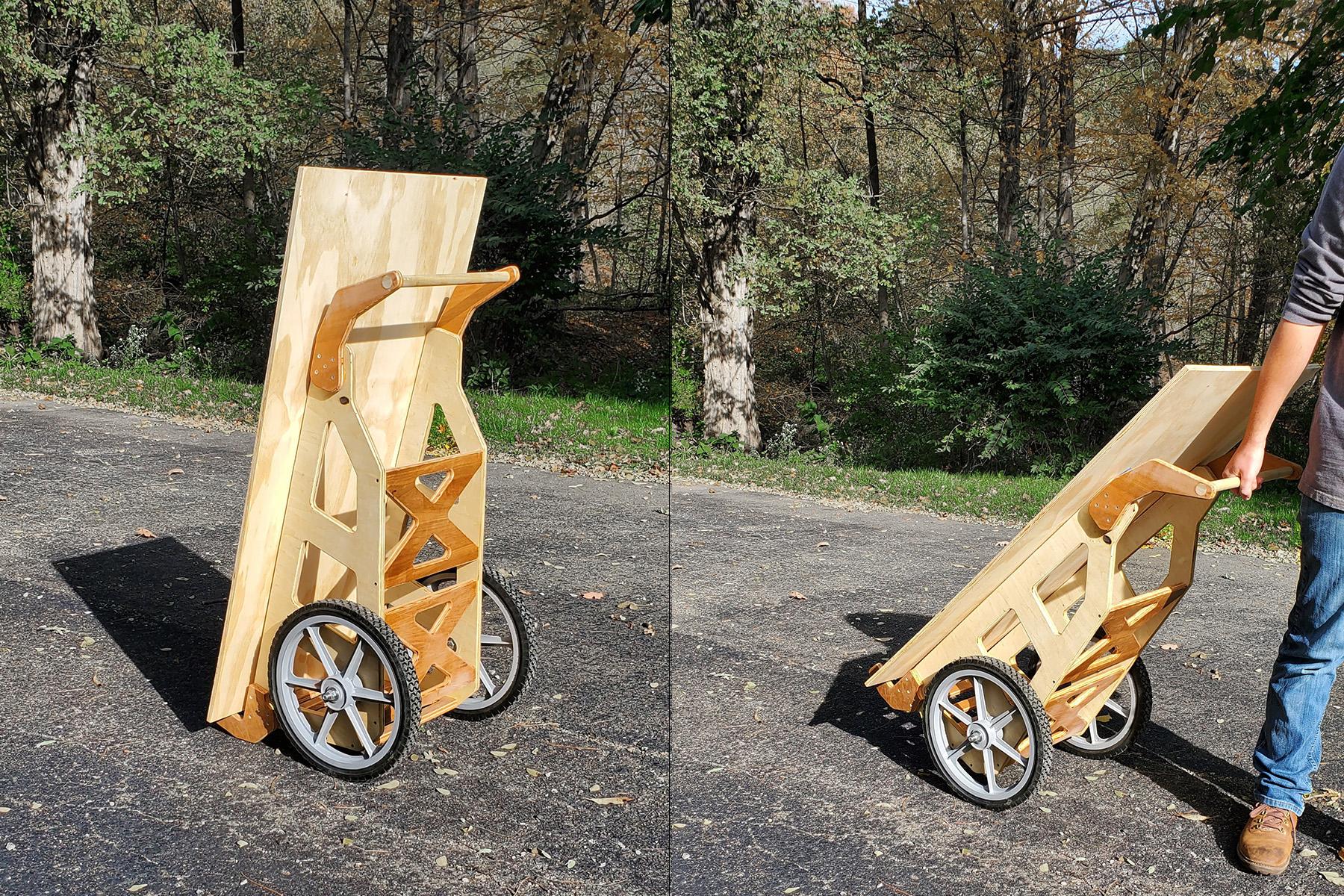
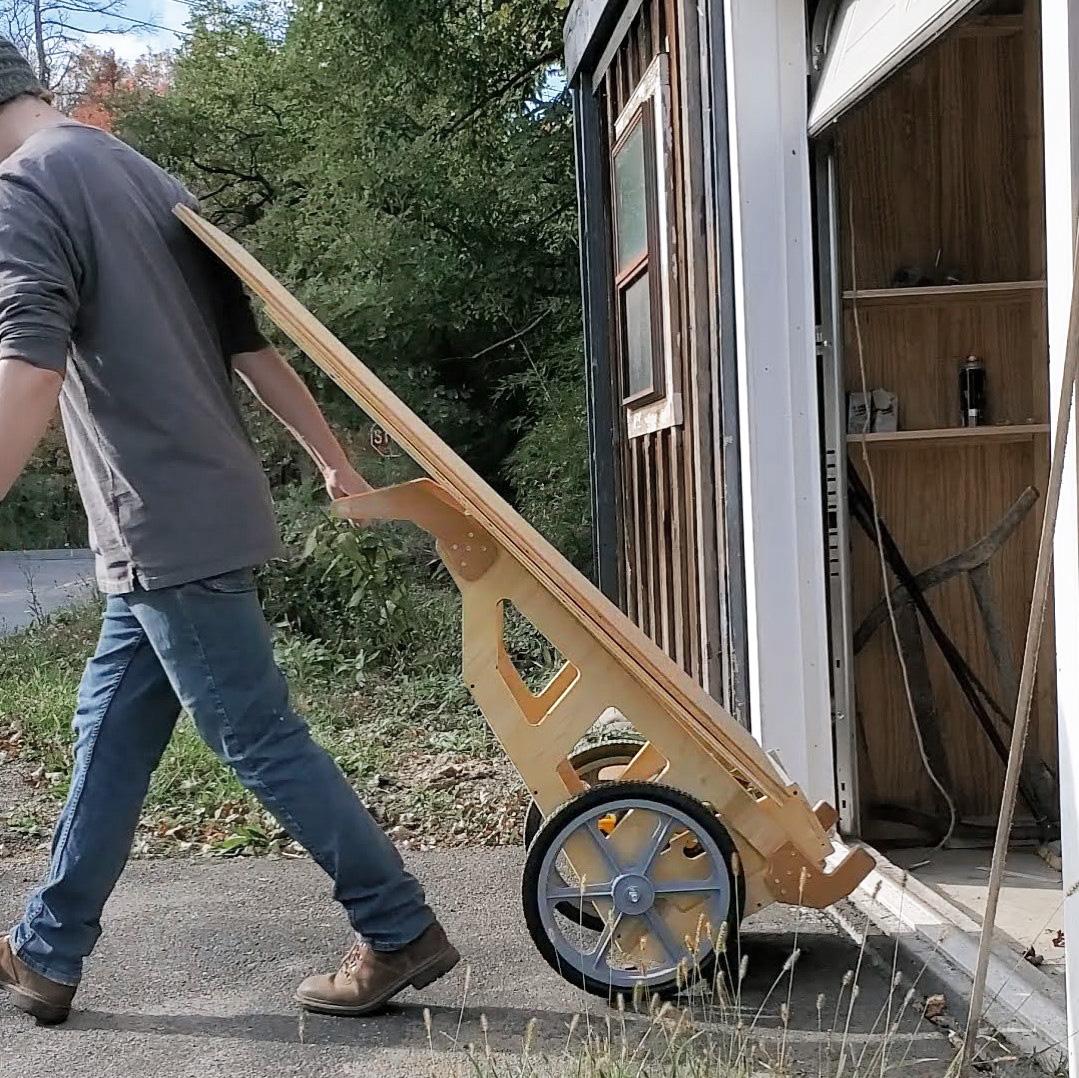
I have a peculiar living situation, that certainly is to my advantage. I live in an apartment, which makes projects difficult to complete. Recently, my landlord gave me access to his old workshop on the property, in return for cleaning it out! The shop came with a planner, large work tables, and a cabinet table saw. This simply could not be better!
However, dragging my tools between the garage and the apartment have been a.... drag. Between the two I have a sharp incline, a flight of stairs, grass, and a short walk. The traditional toolbox with or without wheels have been alright, but they don't do a great job at holding all the tools that inevitably pile up in the garage. What I needed was an all purpose, all terrain tool cart! (Or an excuse for another project....)
Supplies
1/2" wood dowel
16" semi-pneumatic wheels
1/2" bolt at 3-1/2" long
1/2" bolt and washers
Design Iteration
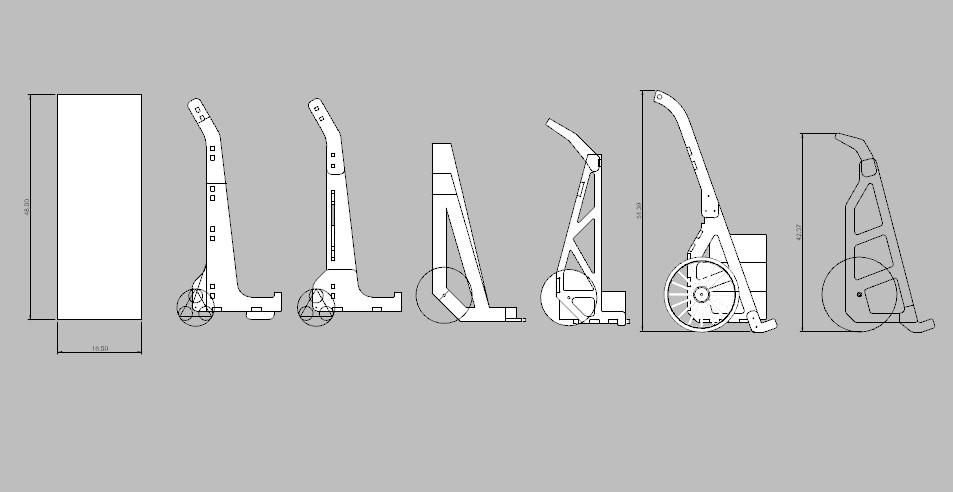
I began with a clear understanding of what I wanted: a tool cart that functioned like a hand truck/dolly and could work to overcome all the obstacles between my home and my projects.
I collected a vast library of ideas from Pinterest, and made multiple iterations within my preferred modeling program, Rhino to come to the final design.
Some design iteration tips that I followed:
- I gathered overall dimensions from other hand carts on the market. The average height is 50", and the width and depth vary by cart type.
- I drew out a box at 48" x 18" as a build restraint and began sketching in Rhino.
- I began with the idea of using custom "stair climber" wheels, but realized they kind of suck...
- I purchased 16" wheels pretty early on in order to know exactly what size I will be using
- Sometimes, its a good idea to bring the digital into reality to test the size and design. This can be made from printed paper, cardboard cut out from a template, or a fill prototype with wood.
- I cut a prototype with scrap wood on the CNC more than once. I attached my most complete prototype, which was really just one half of the cart.
Downloads
Modeling
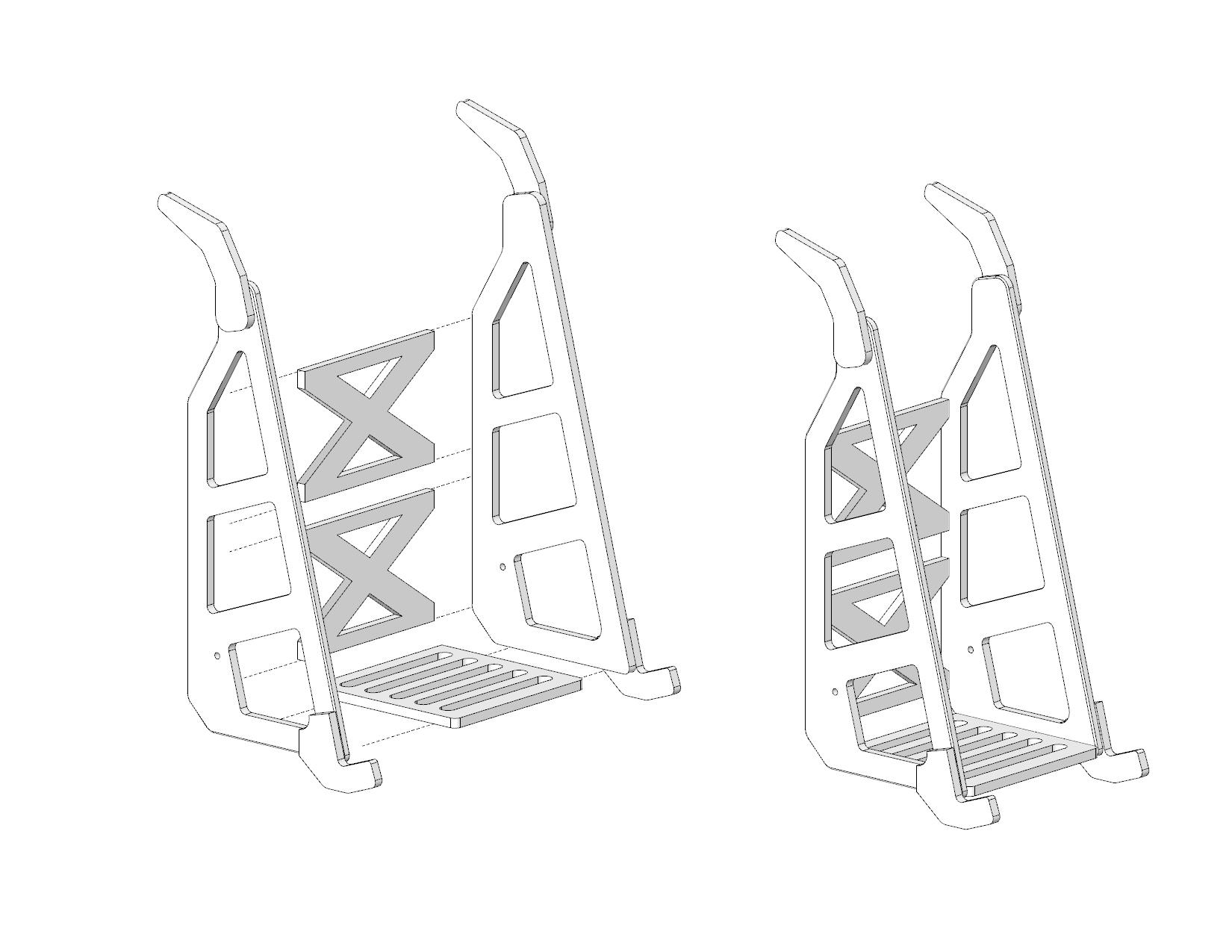
The final design I came to something like a month after starting.... I could never decide on what I liked the most, I finally had to stop and decide that what I had was good enough, and I needed to get to work...
Steps:
- With the final design realized, I needed to clean up the shape of what I had. I added cells to the face of the plywood to lighten the design, leaving 1-1/2" of wood in all locations.
- I then added the middle bits that would connect both halves. Rather than design notches between these bits and the sides, I decided to just use glue and screws to butt join the pieces. The notches add a level of complexity I simply was not ready to get into.
- I also added holes to the connecting pieces to lighten the weight.
- Make a copy, and pull apart all the pieces and lay them flat on the X,Y plane. In Rhino use the command DupFaceBoarder to get the linework of each piece.
- I split the linework template in order to fit on my machine. The 750mm machine is approximately 19 inches square. The odd thing with the Easel control software from Inventables is that you can not cut single straight lines.
- I split the linework at 17.5" in order to avoid single straight lines that will not cut within the program. Due to the same issue as above, I offset any open curves half the distance of the router bit (1/4" bit, offset 1/8") as Easel only allows you to offset cut closed curves.
Machining Template
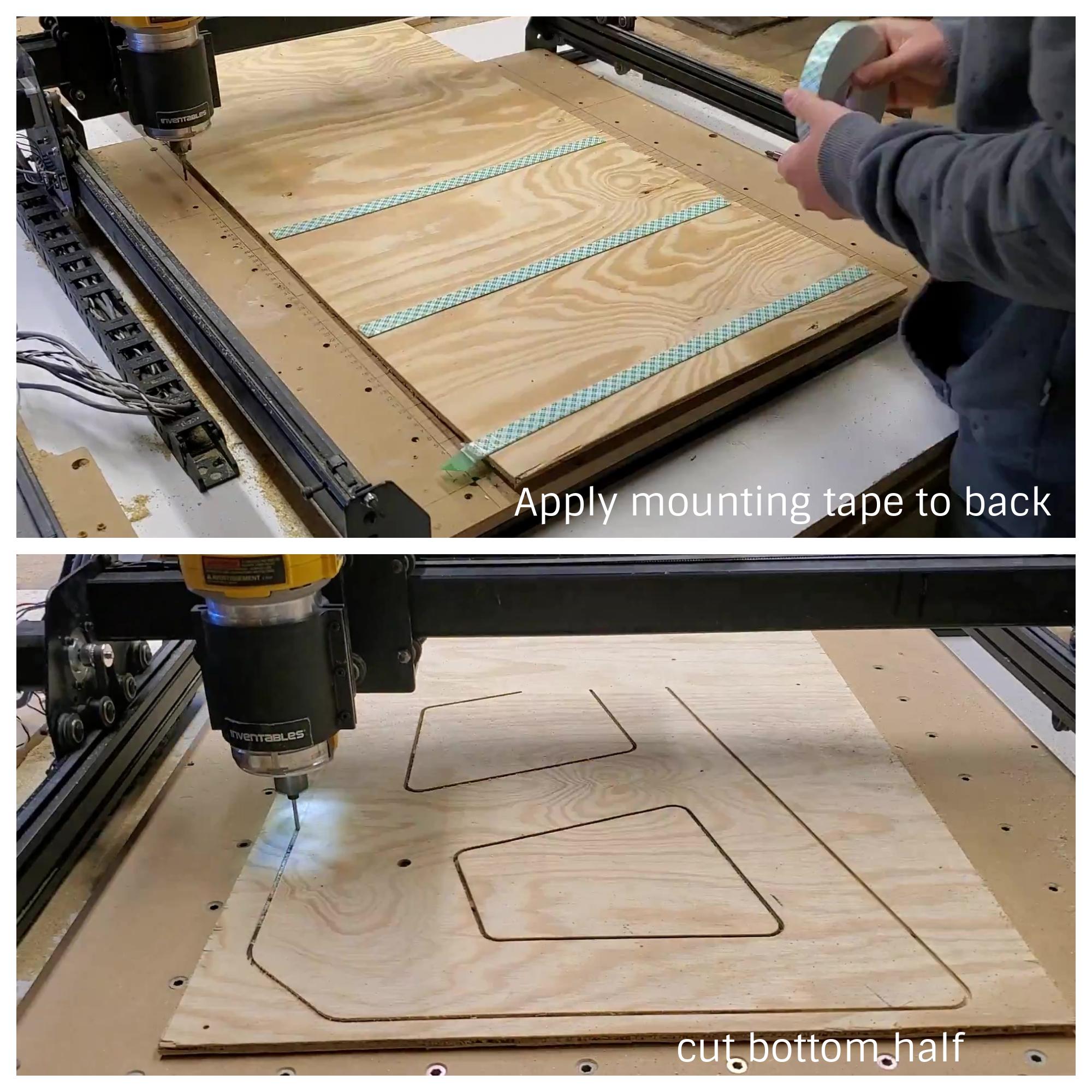.jpg)
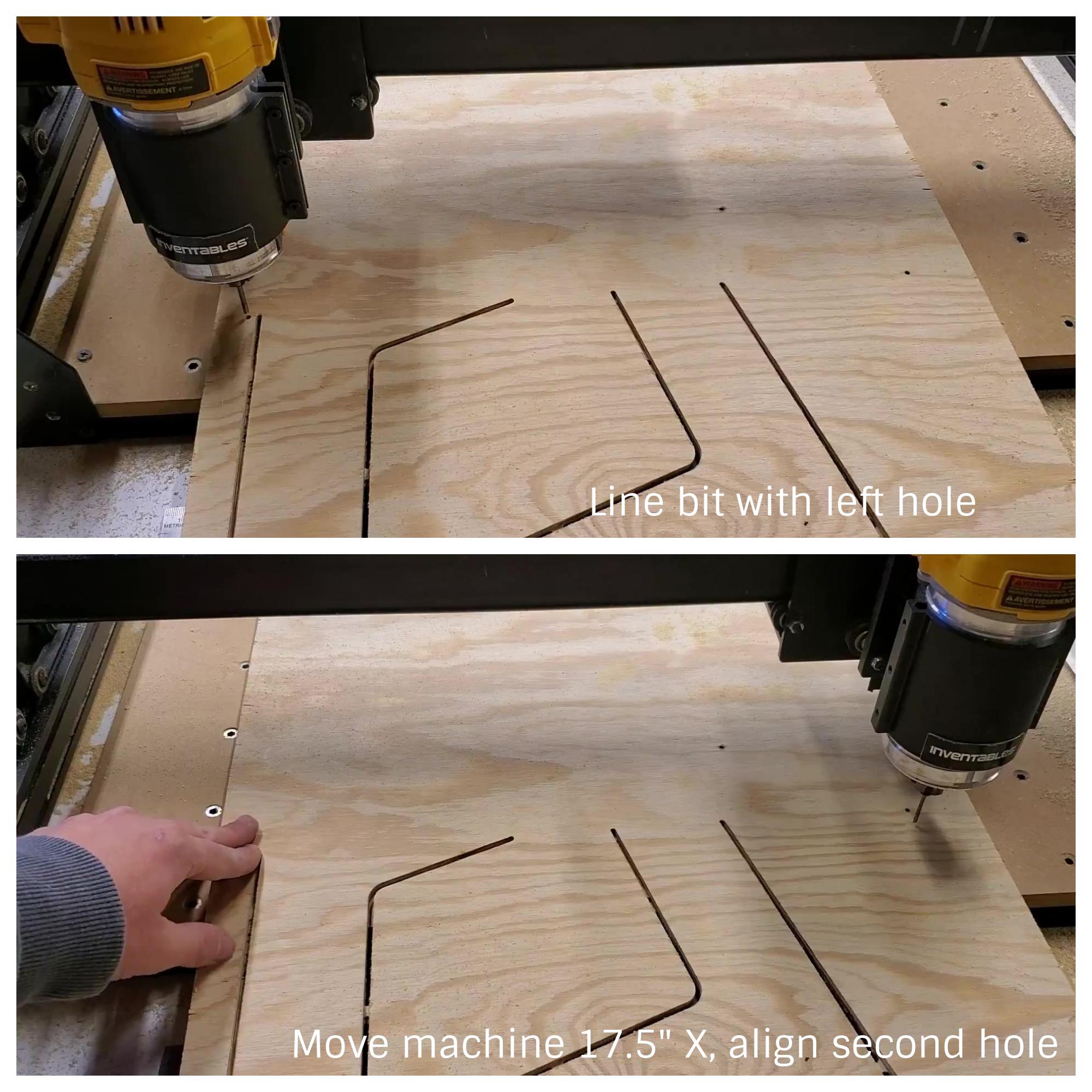.jpg)
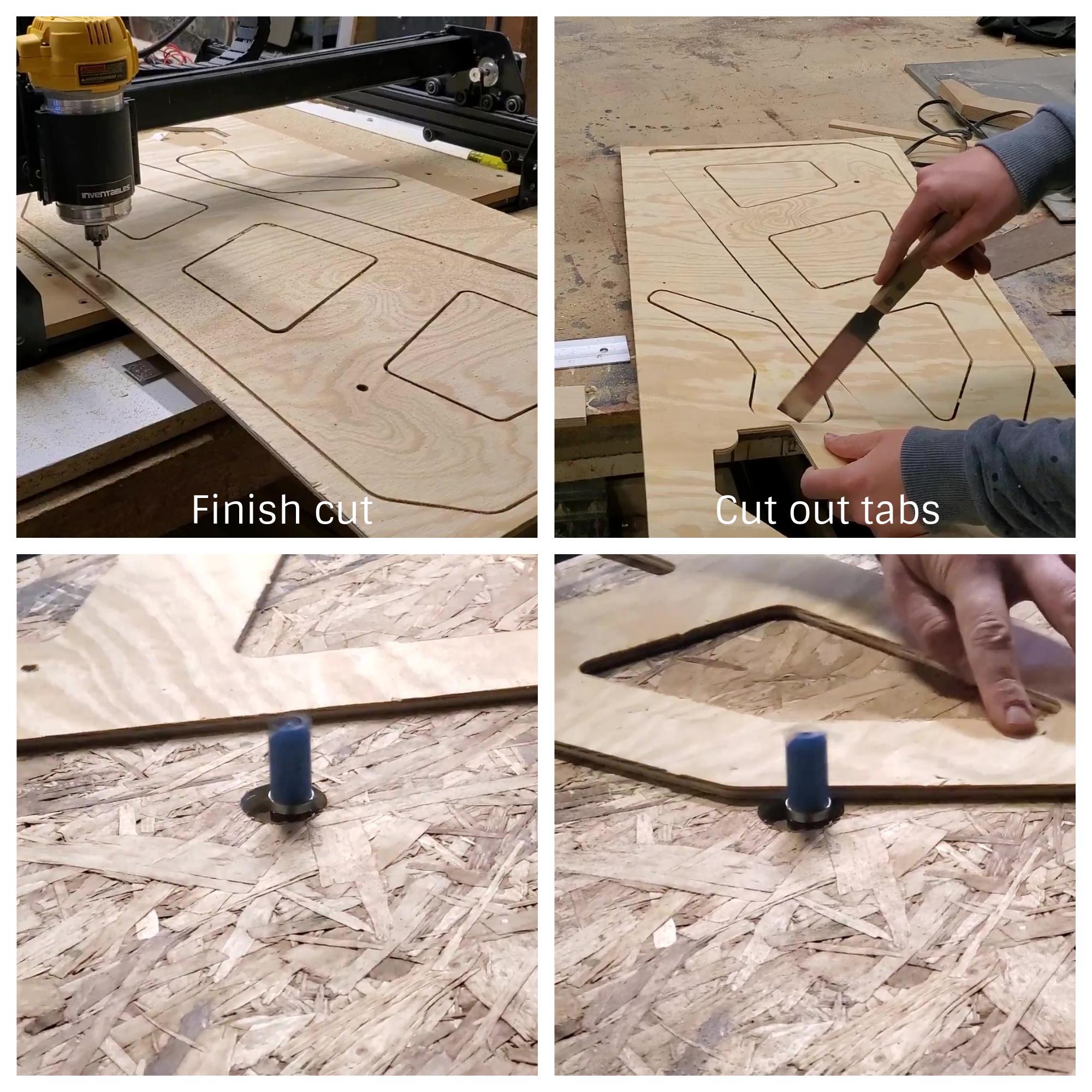.jpg)
There are numerous ways to translate a digital design to a physical form. If you are lucky enough to incorporate a CNC machine into your workshop, it is easily the best method forward. I used my 750mm Xcarve to cut a template from 1/4" plywood.
Tools:
CNC: I used my 750mm Xcarve
1/4" spiral router bit
Router with a flush edge bit
Hand saw
Steps
On the computer
- Export the lines separately from Rhino as an SVG file, then import into Easel.
- set all the lines to cut the full depth of the wood. Set any closed curves to cut either inside or outside the lines. For any open curves, set to cut ON the line (double check if the lines are offset!)
- finally, make registration holes within the program to align the second cut to. I set one hole up the Y axis at 17.5" (0,17.5) then a second 17.5" to the right (17.5,17.5).
In IRL
- I cut the 1/4" plywood down to the overall size of both the files.
- Apply mounting foam tape to the back side of the 1/4" plywood. You NEED to use mounting tape, as the plywood is so thin it could get lifted up off the table with any other method by the router.
- Run the first cut!
- Once finished, DO NOT bump the router. This is the home position!
- Lift and slide the wood down, align the first registration hole with the router bit.
- Once aligned, jog the bit 17.5" right, and hole the first hole to pivot the piece to align the second registration hole. Return the machine to the home position.
- Remount and run the second cut!
- Once it is finished, remove the board from the table, and cut the tabs off with a hand saw.
- Using a flush edge router bit, clean up the edge of the template and remove the rest of the tabs.
Cut and Rout Pieces
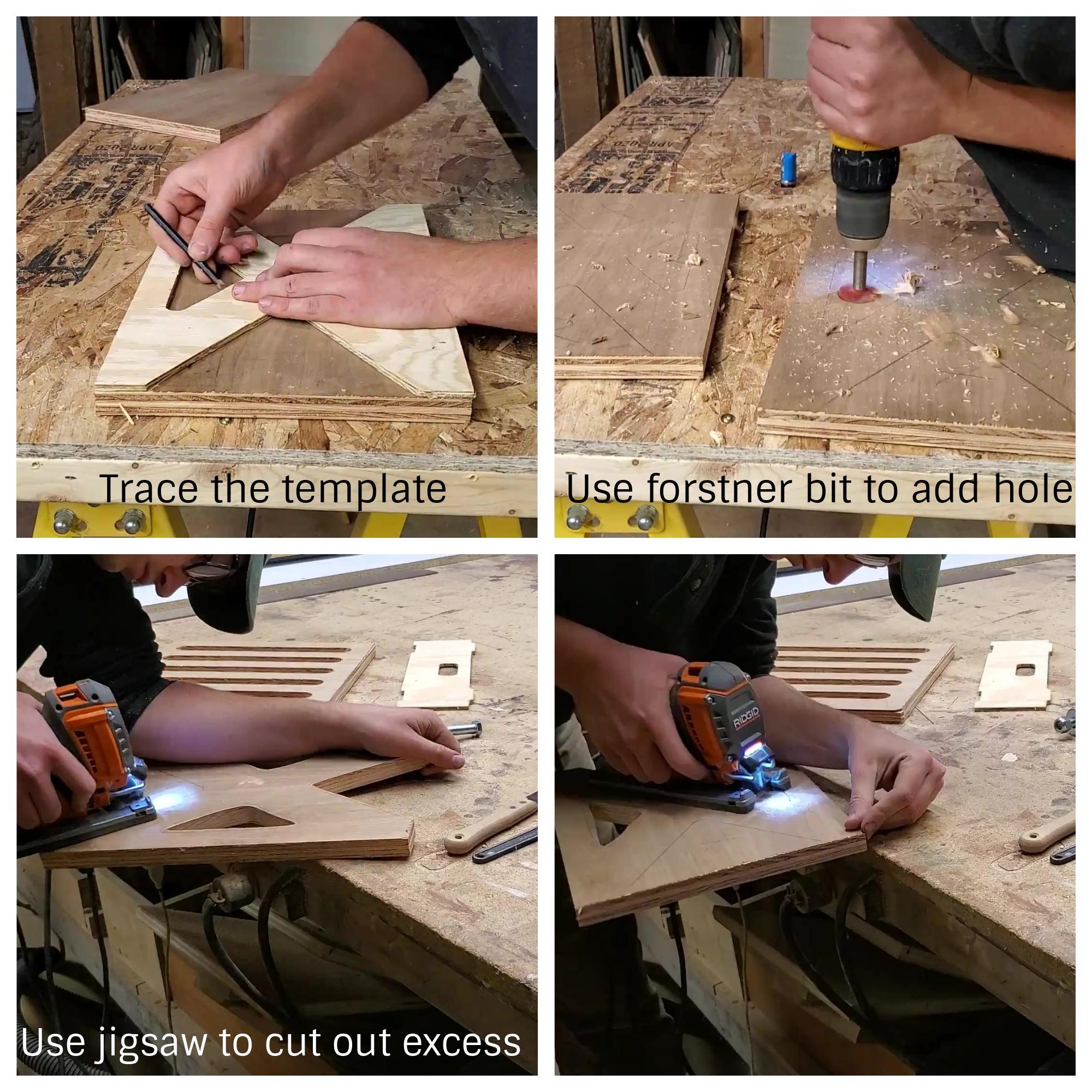.jpg)
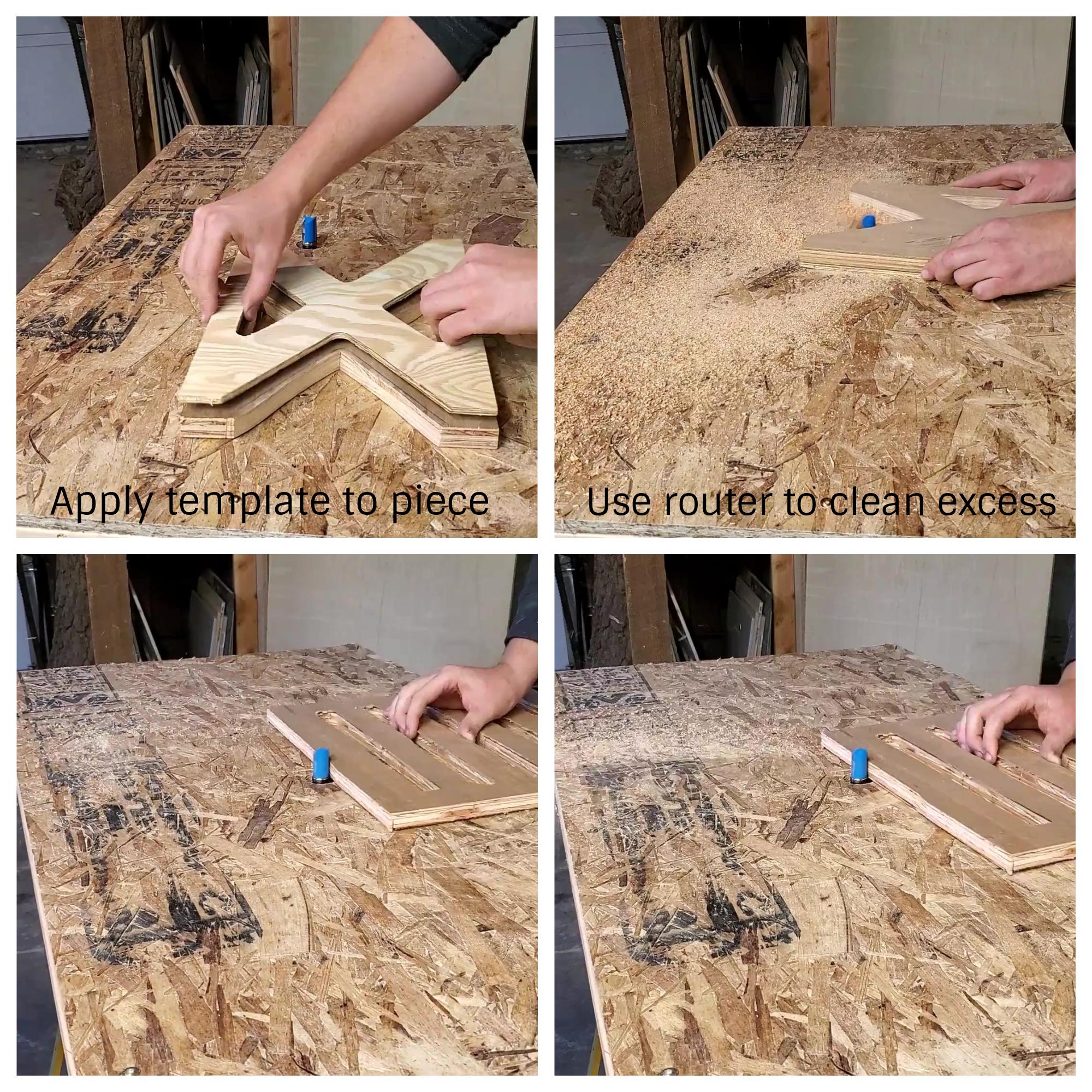.jpg)
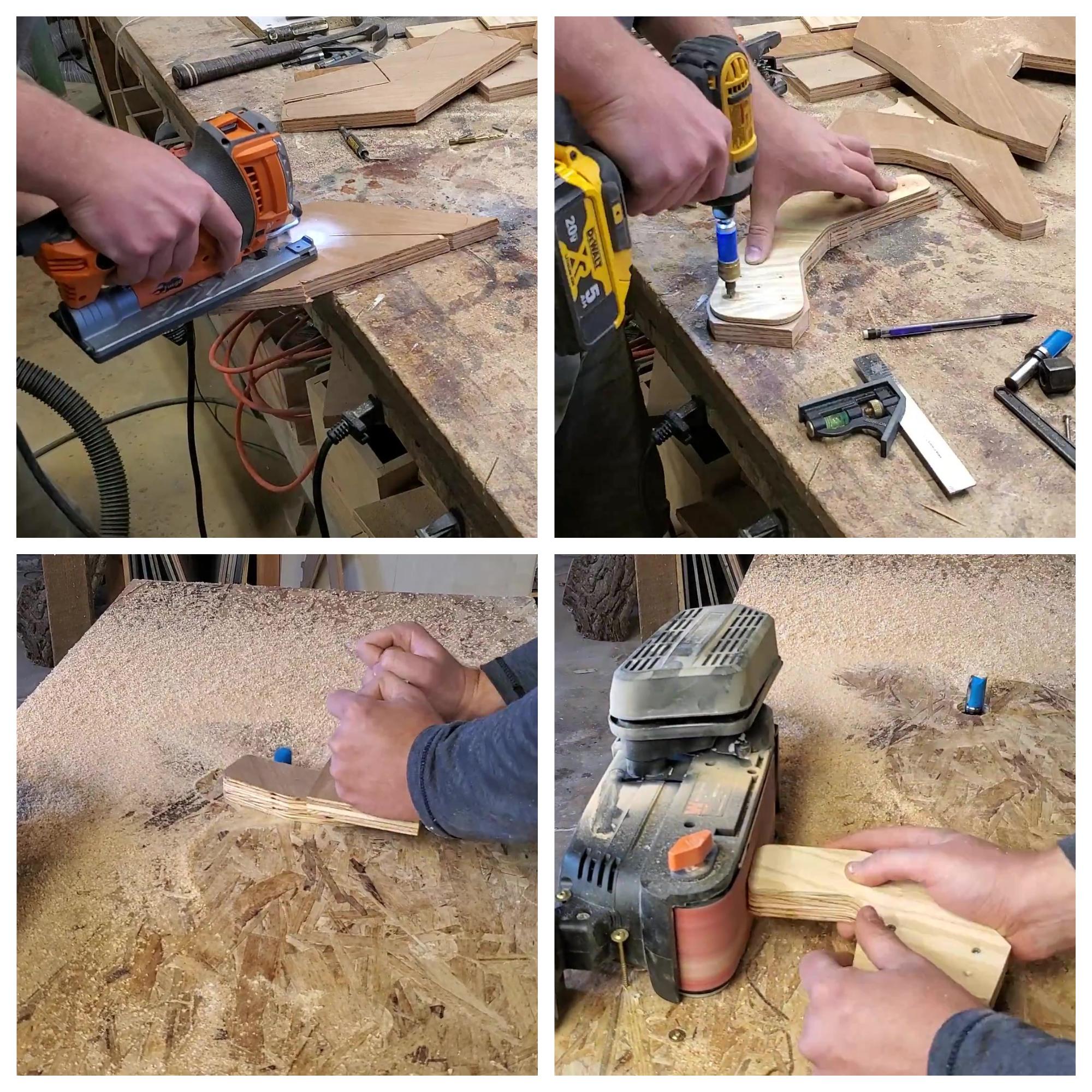.jpg)
There are again plenty of ways forward from here. I would have preferred to have machined directly from 3/4" plywood, but the time would be significantly longer than doing it by hand!
Tools:
Router with flush edge router
1/4" fillet router bit
Jigsaw
Hand drill with forstner bit
Double sided mounting tape
Steps:
- Using the templates, trace out the pattern on the 3/4" plywood. No need to insane accuracy, you just need to know what not to cut
- Using the jig saw and circular saw, I began to cut out the shape, getting within 1 inch of the line.
- Use a hand drill with a forstner bit larger than the jigsaw bit to make holes in any of the closed curves in the center of the piece. Use the jig saw to cut them out.
- Using mounting tape, attach the template back to the wood. Press firmly so it will not slip!
- Moving onto the router table, I set the depth of a flush edge router bit, a straight bit with a guide bearing.
- Work carefully and in the opposite direction of the bits spin to remove material down to the guide template. Be extra careful on the corners. With this large bit, it would often grab onto the material and pull it from my hands....
- On the smaller pieces I attached the template to the wood using screw holes that would be used to attach the wood to the sides.
-
Use a guide block instead of your hands to work the piece on the router table. Make sure the block keeps your hands away from the bit, and if the router was to grab your piece and throw it like an MLB pitcher, your hands are safe!
Prep for Assembly
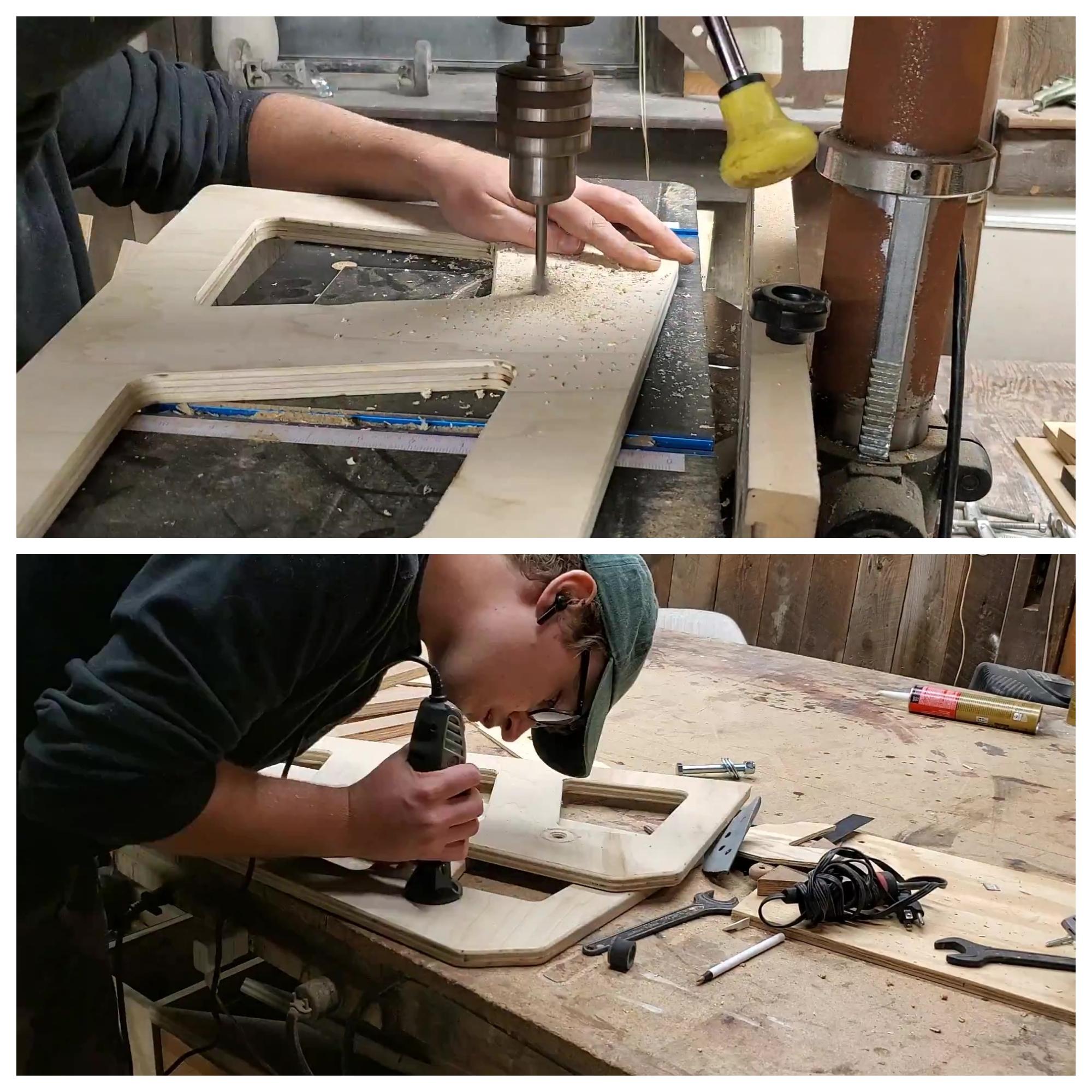.jpg)
The pieces after flush trim routing will be a little rough around the edges, likely literally. I used a round over bit to clean up the edges before sanding.
Tools:
- Router with 1/4" round over bit
- 120 grit sand paper
- Drill press
- 1/2" drill bit
- Dremel with round over router bit attachment
Steps:
- set the 1/4" router bit in the router table.
- I ran the bit around the outer and internal edges of the sides pieces
- I did the same for the insert pieces, except for any areas the pieces would connect to the sides.
- Using 120 grit sandpaper, I cleaned up the edges and any marks on the surfaces of the pieces.
- I used the hole from the template to mark the center point for the wheel axel holes.
- Drill the holes on a drill press to ensure the axel will sit perpendicular to the sides
- I used my router attachment on my Dremel to round over the edges on this hole.
Assembly and Spraying
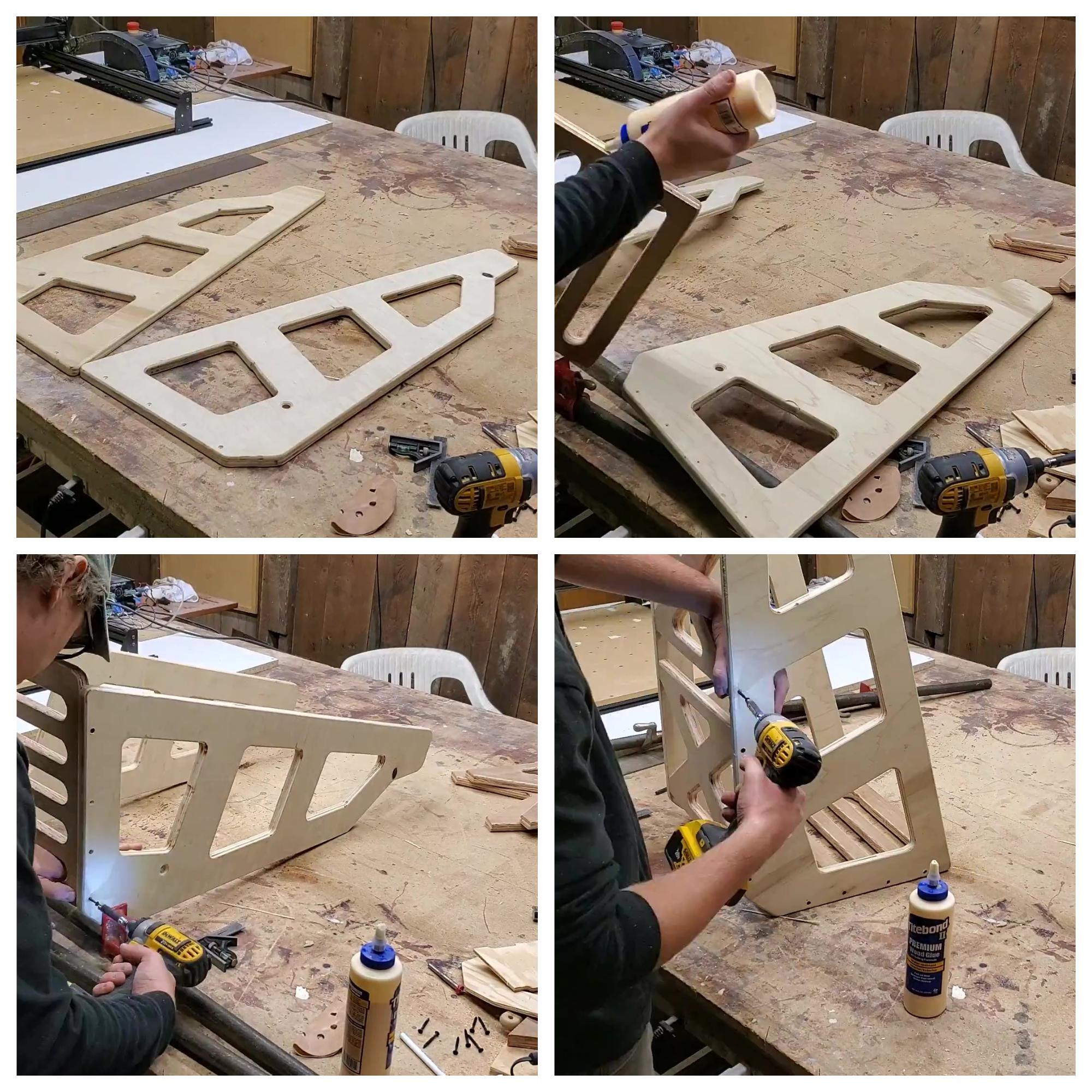.jpg)
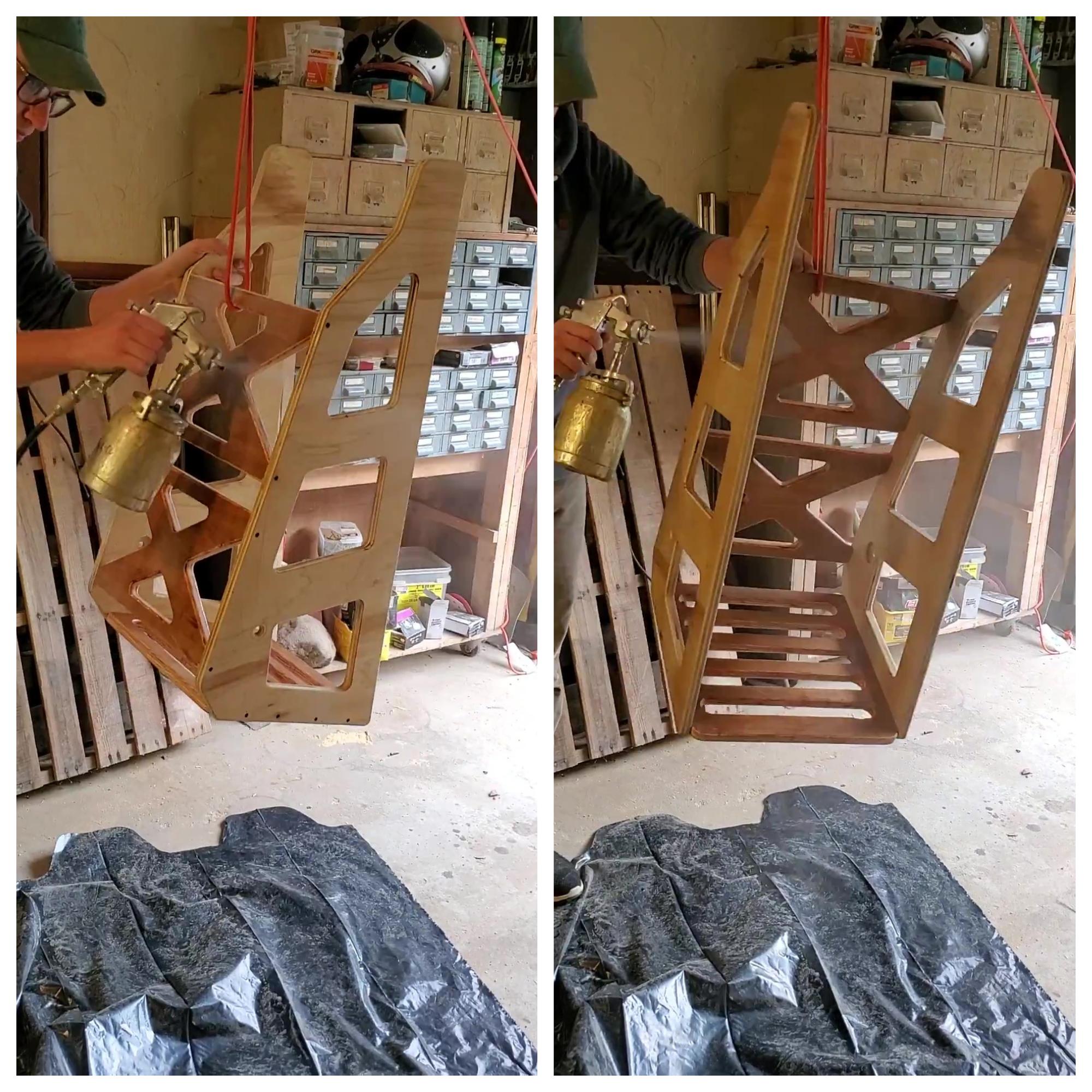.jpg)
I kept assembly easy with just screws and glue. A more accurate approach would be to make puzzle joints between the pieces so they would only fit together one way.
Tools:
- Driver
- Counter sink drill bit
- Small combination square
- Compressor sprayer or rags to apply polyurethane
Steps:
- Laying out the left and right sides so that they are opposite each other, I drilled pilot holes for all the screws to attach the connecting pieces.
- I aligned the bottom piece first, using a combination square to determine its location and marking a registration on the piece with a pencil.
- apply glue to the sides and then connect the two sides to the base with screws.
- I attached the piece to be set back from the edge, past the rounded over edge.
- Repeat for the final two pieces. Be sure that they are being attached while the bottom is square to the sides.
- After drying, I tied the piece up to the ceiling to make spraying the poly easier.
- I applied the polyurethane using a paint sprayer to make for easier and even application
- Repeat for all the other pieces, I used a rag to apply the poly to these.
- Once dry, I used 220 grit sand paper to smooth out the spray.
Attach the Extras
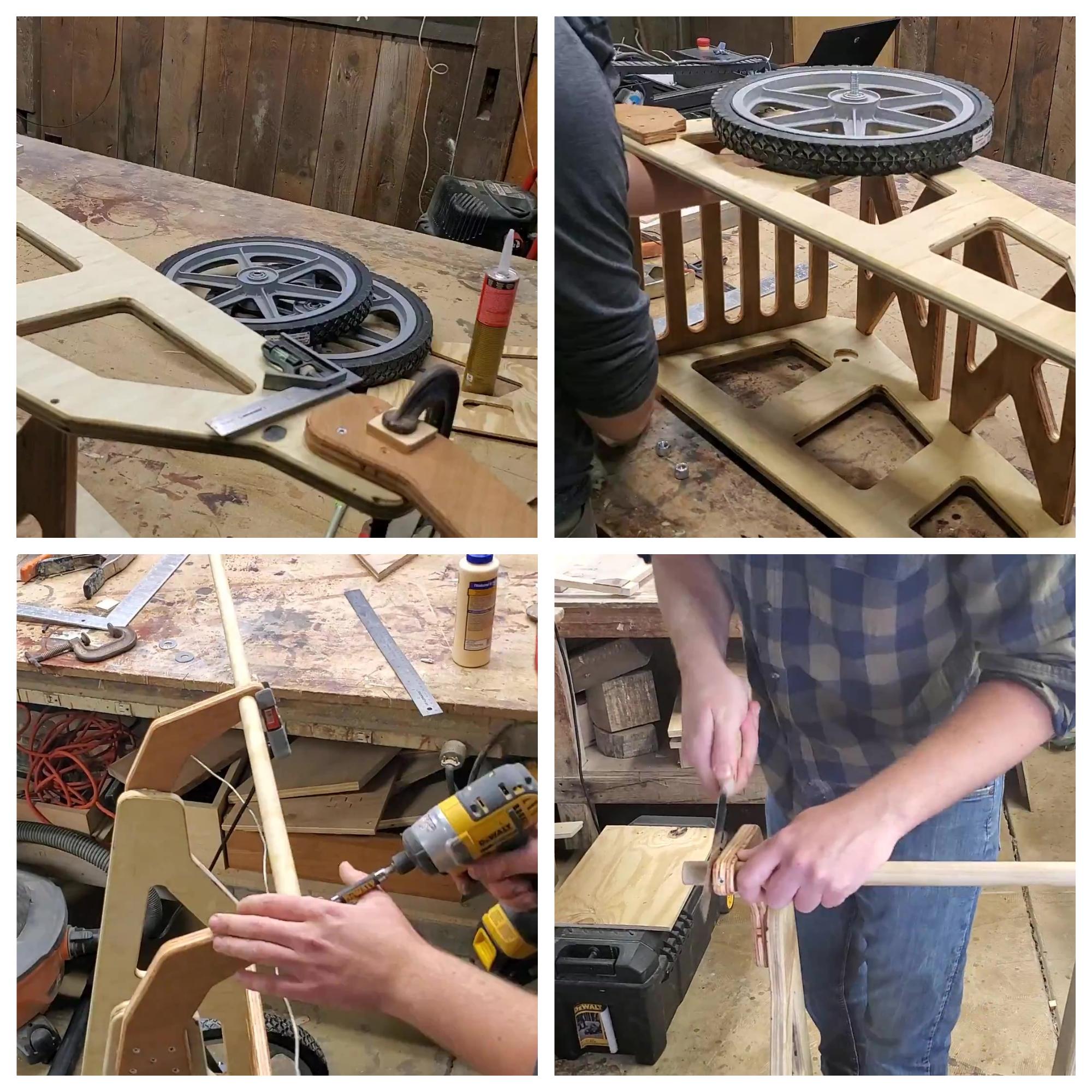.jpg)
I attached the handles and feet the same way as the connecting pieces , using screws and glue. I used the template with a registration mark on it to make sure the pieces are set at the same location on either side.
Once these are attached, I ran a 1/2" dowel through the handle holes, applied glue, and set a screw through the side of the plywood into the dowel rod. Once dry, I cut off the excess to be flush!
finally, I attached the wheels, using the 1/2" bolt, 2 washers, and a nylon locking bolt.
Final
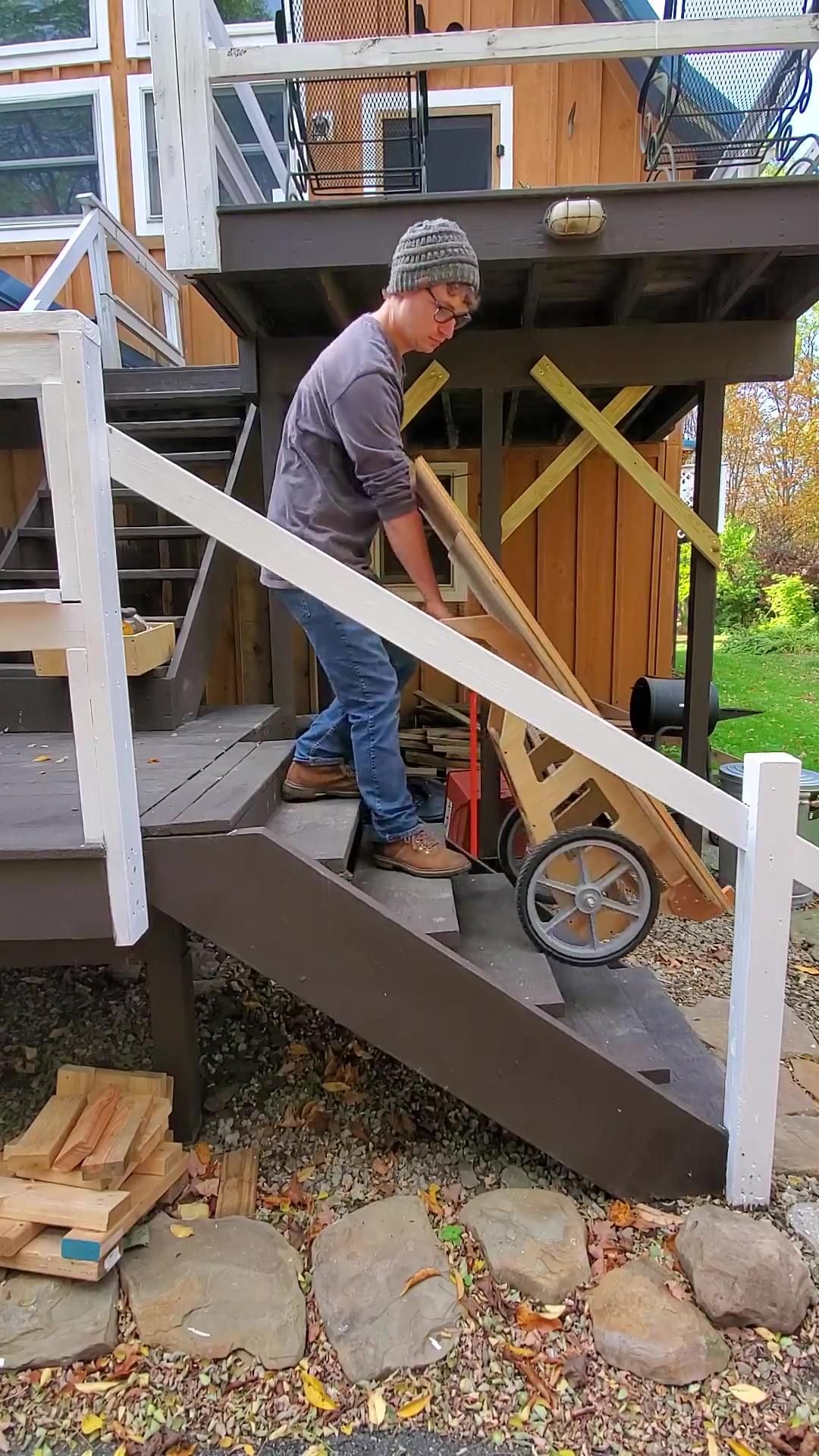
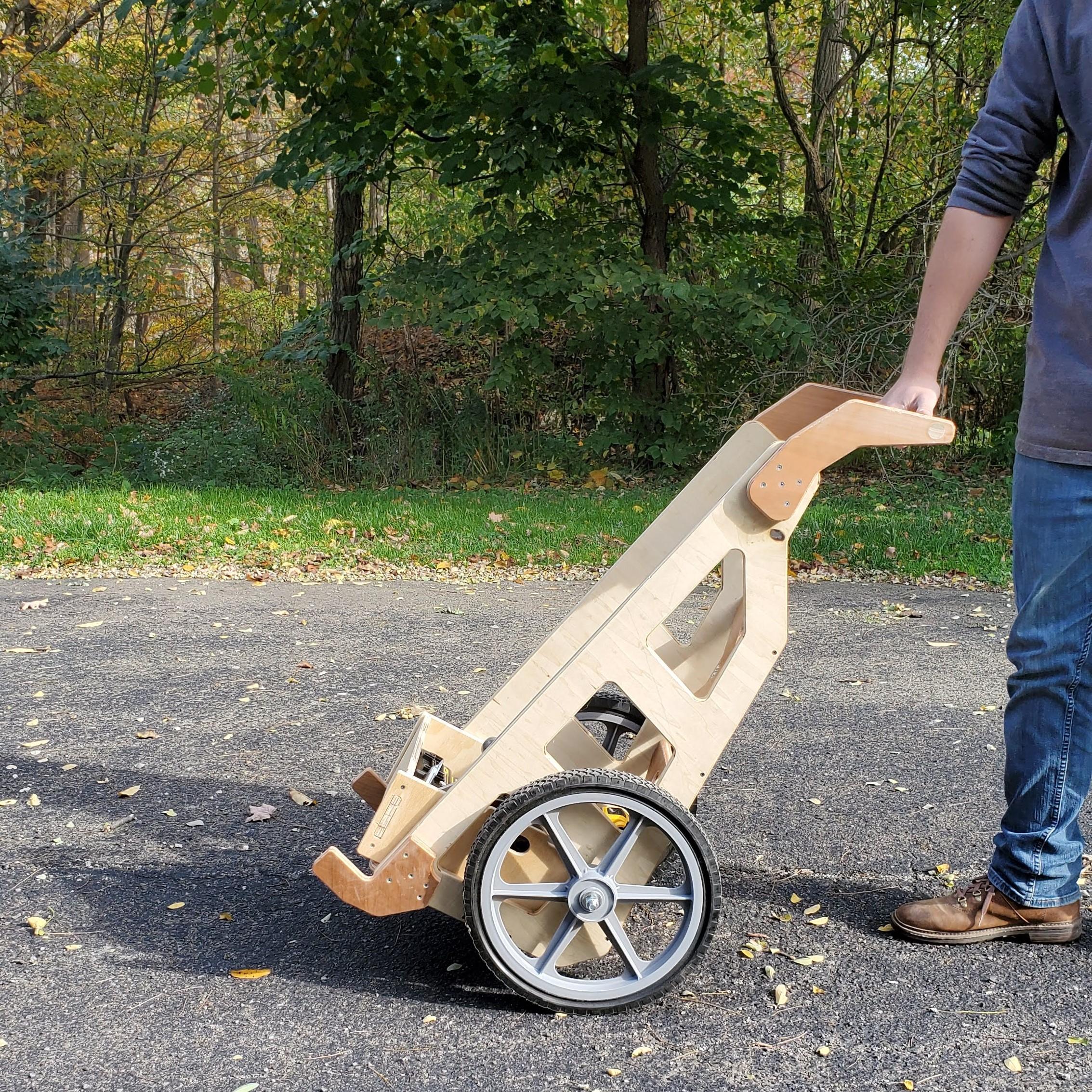
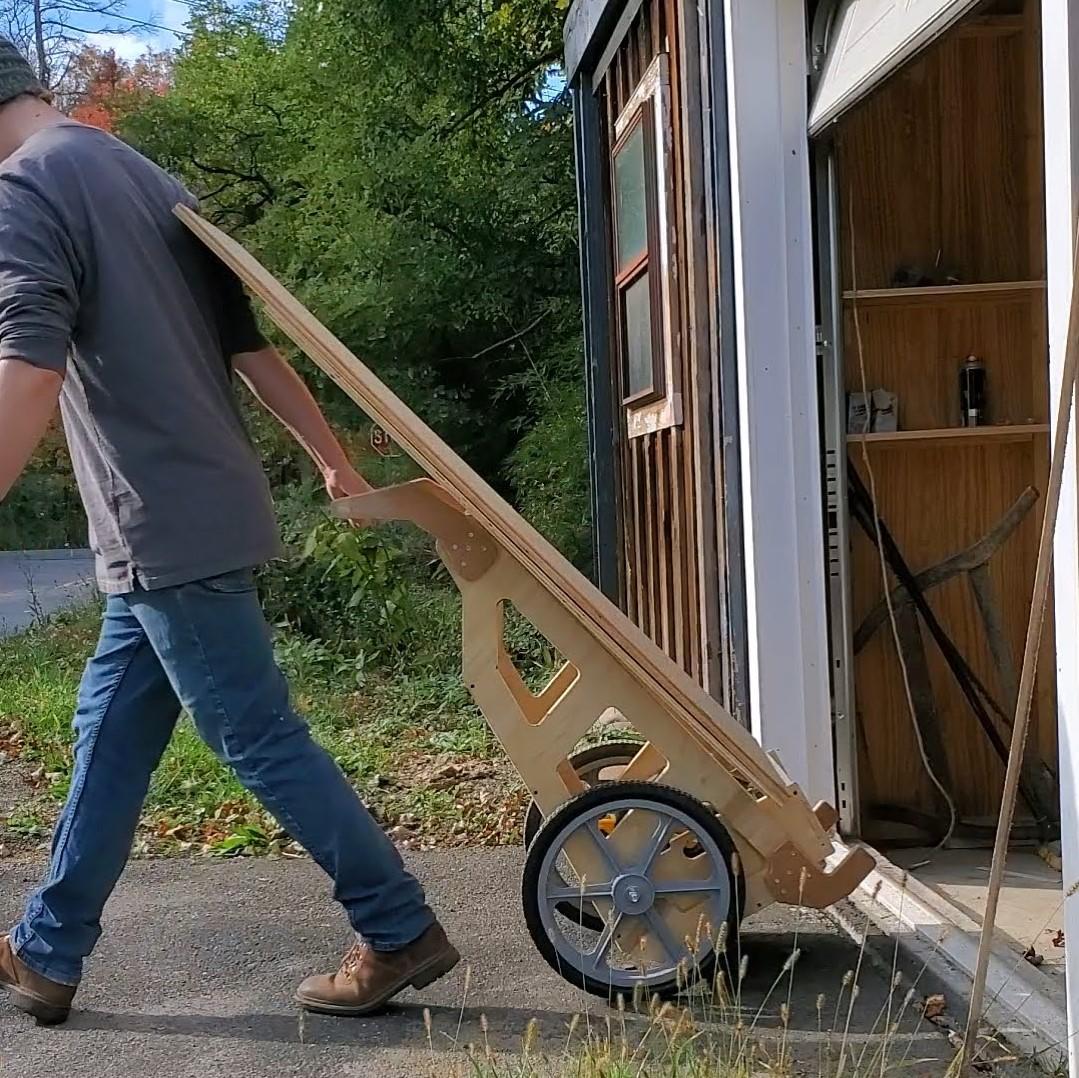
I really could not be happier with how this has come out. Over the past few days, I have found multiple uses for it, from moving materials to tools to all types of different projects around the property. I will be making custom stacking tool boxes that will fit on the cart next in order to move all my tools around in an organized fashion.
I hope you enjoyed this project as much as I did! If you would like to see more of the things that I design and make, look through my past instructables! or, you can follow me on Instagram @Designer_Of_